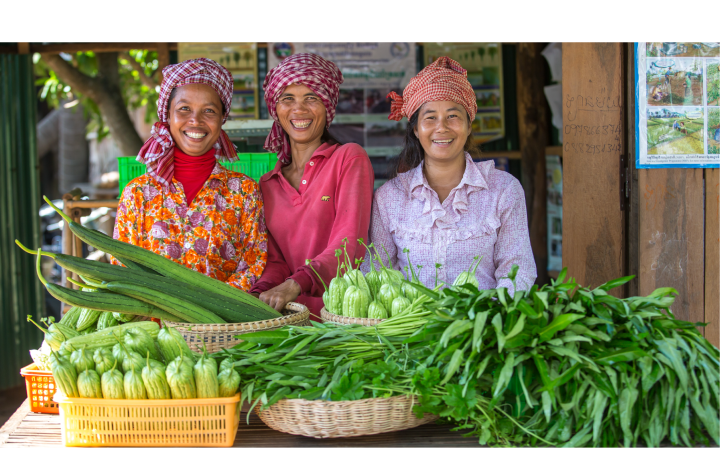
2016 Chor Sokunthea/ Asian Development Bank
Biodiversity is key to unlocking a more sustainable future.
As the global community is called to re-examine its relationship to the natural world, one thing is certain: despite all our technological advances, we are completely dependent on healthy and vibrant ecosystems for our health, water, food, medicines, clothes, fuel, shelter, and energy, just to name a few. This year's theme “Our solutions are in nature” emphasises hope, solidarity and the importance of working together at all levels to build a future of life in harmony with nature.
Climate change and #Biodiversity loss are inseparable emergencies. We can’t fix one without the other.

It is expected, from each of us, that we will “Build Back Better” by using this time to increase the resilience of nations and communities as we recover from this pandemic. 2020 is the year when, more than ever, the world can signal a strong will for a global framework that will “bend the curve” on biodiversity loss for the benefit of humans and all life on Earth.

“In the past, we had a difficult life. We depended on slash-and-burn agriculture, clearing the forest, farming a spot for two years, and then shifting to another spot. We didn’t have enough food to eat.”

PFES has given many households in Lac Duong enough money to invest in livestock. Aside from coffee farming, cattle and poultry raising now supplement the incomes of many families in the area
Asian Development Bank | VIETNAM
Vietnam has established many national parks and nature reserves in recent decades. This is a vital step toward protecting the country's valuable biological diversity. However, many of the areas protected so far are small and disconnected, hindering efforts to conserve ideal habitats for plant and animal species and promote local community welfare.
One solution to fragmented ecosystems is to create biodiversity corridors, which provide linkages between protected areas. The Pilot Biodiversity Corridor (BC) program (2005-2006) helped develop such a corridor in the Central Highlands province of Lam Dong, specifically between the 70,000-hectare Bidoup Nui Ba National Park and the nearby Da Nhim Watershed Protection Forest.
The National Park was established in November 2004 and initially faced the immediate challenge of aligning the interests of poor residents with protecting the forestland and biodiversity. With support from the Asian Development Banks's (ADB) Poverty and Environment Fund (PEF), the BC program enlisted villagers in three communes in and around the park to participate in defining a corridor and to then take responsibility for protecting it.

K’ho villagers from the Da Chais commune prepare to go out on patrol in Da Nhim. The Biodiversity Corridor Program raises awareness amongst the local communities about the need to preserve the surrounding environment.
Involving local farmers in the baseline survey and biodiversity assessment allowed local communities and the program team to better understand each other and forge personal relationships. This community-based approach empowered farmers to propose investments under the project. Farmers were then given training and assistance to enhance their livelihoods.
The focus of the BC program project to promote income-generating activities has since been replicated in other biodiversity corridor programs supported by ADB across the Greater Mekong Subregion (GMS), including the Biodiversity Conservation Corridors Project (Launched 2011). The project is a $70 million initiative that builds off the community-based model employed by the BC program.
Asian Development Bank | CHINA
The Xishuangbanna Biodiversity Conservation Corridors pilot site is located in southern Yunnan and stretches down to the border of Lao. Of the eight established biodiversity corridors, ADB's Greater Mekong Subregion Core Environment Program (GMS CEP) has focused its activities in two (Nabanhe to Mangao and Mengla to Shangyong), the latter of which includes a transboundary nature reserve that is home to a wild elephant population.
Pilot activities included initiatives under three main areas: poverty reduction, land use planning and management, and ecosystem restoration. These resulted in village development funds, forest regeneration, corridor boundary approval, the establishment of nature reserves and transboundary conservation agreements between China and Lao.
Biodiversity corridors program in the tropical rainforests of Yunnan province is ensuring the survival of rare plant and animal species, while eco-farming practices provide local communities with sustainable livelihoods.


